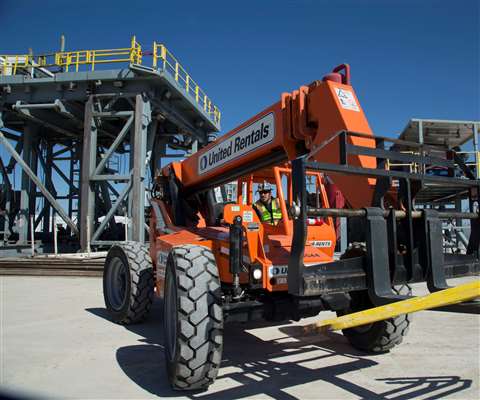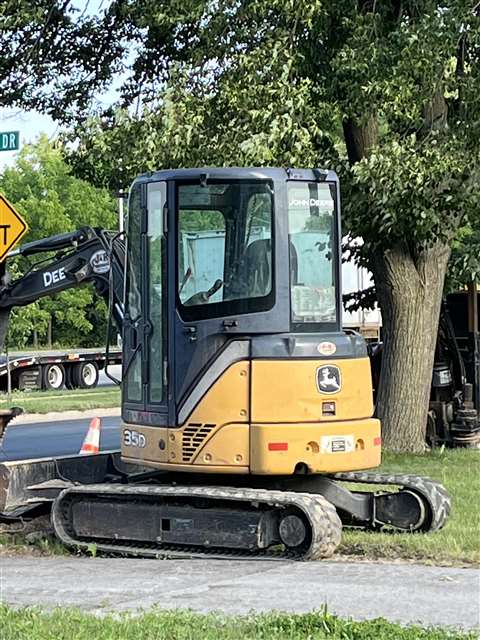Trendlines: Equipment rental remains solid in 2022
05 September 2022
 North American rental revenue jumped more than 15% year-over-year to $21 billion in 2021. (Photo: United Rentals)
North American rental revenue jumped more than 15% year-over-year to $21 billion in 2021. (Photo: United Rentals)
Equipment rental companies enjoyed a strong year in 2021, and in Q1 2022, got off to an even better start than in ‘21. Rental industry management is hoping for a continuation of that strength throughout the rest of 2022. But it is not clear that the fabulous first quarter results can be maintained throughout the year as the U.S and global economies lose traction on practically a daily basis.
The rental market began to have problems securing enough new equipment and keeping staffing in place in late 2021 and these problems are amplified this year. Backlogged orders from OEMs are spanning into 2023, resulting in rental companies holding onto older equipment that they most likely would have sold when new machinery wasn’t as hard to come by. In turn, renters now have the option to purchase a used machine rather than wait for a rental outlet to have one available for them to rent.
Driven by supply
In today’s market, it might make more economic sense for them to own a machine than pay higher rental rates. This contrasts with the earlier premise that cost inflation associated with the replacement of equipment and technical changes make renting more attractive.
The construction-related economy is shifting toward being driven by supply rather than demand, as seen in today’s higher sales prices and rental rates. Last year, rental equipment capex spending of $5.2 billion by the four largest publicly held equipment rental companies increased more than 150% year-over-year and approximately 11% when compared to 2019 spending. We forecast rental capital expenditures will increase another 5% in 2022 as long as OEMs are able to make and deliver ordered machines in a timely fashion.
Most OEMs have significant product backlogs due to labor and supply chain issues. They are working to reduce those backlogs, but a lot are due to circumstances beyond their control. If OEMs are unable to manufacture goods on a more timely basis and better supply equipment rental companies, meeting demand will be limited and the end result will be problematic for both the manufacturers and the rental businesses.
Steady utilization
At the moment, the rental business appears to be holding steady, with increased sales prices and rental rates, along with steady utilization rates, resulting in greater revenue. Rental companies could generate more revenues with larger fleets, but if that was the case, they might not be able to raise rental rates as high and utilization would lower, as well.
 Earthmoving equipment rentals saw a revenue increase of about 15% year-over-year, largely due to strong demand in the compact equipment such as mini-excavators. (Photo: Becky Schultz)
Earthmoving equipment rentals saw a revenue increase of about 15% year-over-year, largely due to strong demand in the compact equipment such as mini-excavators. (Photo: Becky Schultz)
When taking into consideration the 21 types of equipment we monitor, we find that North American rental revenue jumped more than 15% year-over-year to $21 billion in 2021. The rise was largely driven by both the significant increase in the volume of rental equipment available, as well as greater utilization rates fueled by growth in construction spending.
Earthmoving equipment rentals experienced a revenue increase of about 15% year-over-year, which was largely attributable to strong demand in the compact machinery segment, mainly mini-excavators and compact track loaders. Material handling revenues also increased 15%, with strength coming from telehandler revenues. Mobile elevating work platform (MEWP) revenues increased 16% and crane rental revenues increased 9%.
Our estimates represent about 40% of the American Rental Association’s (ARA) $50.2 billion estimate of total 2021 construction and industrial rental equipment revenue. When adding products that we don’t monitor such as gen-sets, HVAC equipment, pumps, tools and other items often referred to as “specialty rental” and party items, we estimate industry 2021 total revenue was approximately $23 billion. I’m expecting 2022 rental revenues to grow somewhere around 5% based on what we’re seeing in today’s economy.
Too optimistic?
With today’s ongoing turmoil and uncertainty, I believe that many industry expectations are a bit overly optimistic, since they don’t take into consideration the enduring inflation and skyrocketing energy and fuel costs.
 Peter Yengst is president of Connecticut-based market research and consultancy Yengst Associates.
Peter Yengst is president of Connecticut-based market research and consultancy Yengst Associates.
The equipment rental industry is looking to the Infrastructure Spending and Jobs Act to provide funds that support additional construction spending, but inflation is likely to take a big bite out of that and many state and local officials nationwide have postponed or scaled back infrastructure projects.
We may find that the second half of the year is a bit rougher than previously anticipated, but I believe the rental equipment market will remain in good health for the most part.
STAY CONNECTED




Receive the information you need when you need it through our world-leading magazines, newsletters and daily briefings.
POWER SOURCING GUIDE
The trusted reference and buyer’s guide for 83 years
The original “desktop search engine,” guiding nearly 10,000 users in more than 90 countries it is the primary reference for specifications and details on all the components that go into engine systems.
Visit Now
CONNECT WITH THE TEAM









